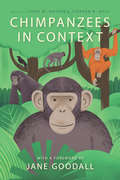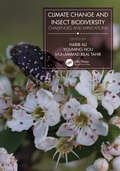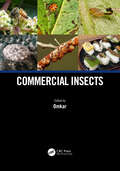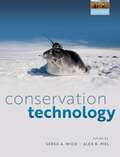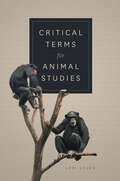- Table View
- List View
Chimpanzee (Large Print)
This is an image of a chimpanzee shown from the side with its head in the top left corner of the page and body in the centre. There is a locator dot shown, which will be at the top left of the page when the image is the right way up.The chimpanzee is facing you so both ears, eyes, small nostrils and mouth can be found. It has a pale hairless face. On the right of the page is the chimpanzee's hairy body. The chimpanzee walks on its forearms and legs. Its forearms to the left of the image rest on the knuckles of its curled hands and to the right are its legs with large feet and toes at the bottom of the page.
Chimpanzee (UEB Contracted)
This is an image of a chimpanzee shown from the side with its head in the top left corner of the page and body in the centre. There is a locator dot shown, which will be at the top left of the page when the image is the right way up.The chimpanzee is facing you so both ears, eyes, small nostrils and mouth can be found. It has a pale hairless face. On the right of the page is the chimpanzee's hairy body. The chimpanzee walks on its forearms and legs. Its forearms to the left of the image rest on the knuckles of its curled hands and to the right are its legs with large feet and toes at the bottom of the page.
Chimpanzee (UEB Uncontracted)
This is an image of a chimpanzee shown from the side with its head in the top left corner of the page and body in the centre. There is a locator dot shown, which will be at the top left of the page when the image is the right way up.The chimpanzee is facing you so both ears, eyes, small nostrils and mouth can be found. It has a pale hairless face. On the right of the page is the chimpanzee's hairy body. The chimpanzee walks on its forearms and legs. Its forearms to the left of the image rest on the knuckles of its curled hands and to the right are its legs with large feet and toes at the bottom of the page.
Chimpanzees in Context: A Comparative Perspective on Chimpanzee Behavior, Cognition, Conservation, and Welfare
The study of the chimpanzee, one of the human species’ closest relatives, has led scientists to exciting discoveries about evolution, behavior, and cognition over the past half century. In this book, rising and veteran scholars take a fascinating comparative approach to the culture, behavior, and cognition of both wild and captive chimpanzees. By seeking new perspectives in how the chimpanzee compares to other species, the scientists featured offer a richer understanding of the ways in which chimpanzees’ unique experiences shape their behavior. They also demonstrate how different methodologies provide different insights, how various cultural experiences influence our perspectives of chimpanzees, and how different ecologies in which chimpanzees live affect how they express themselves. After a foreword by Jane Goodall, the book features sections that examine chimpanzee life histories and developmental milestones, behavior, methods of study, animal communication, cooperation, communication, and tool use. The book ends with chapters that consider how we can apply contemporary knowledge of chimpanzees to enhance their care and conservation. Collectively, these chapters remind us of the importance of considering the social, ecological, and cognitive context of chimpanzee behavior, and how these contexts shape our comprehension of chimpanzees. Only by leveraging these powerful perspectives do we stand a chance at improving how we understand, care for, and protect this species.
Climate Change and Insect Biodiversity: Challenges and Implications
This up-to-date reference book discusses the effects of climate change on the biodiversity of insect pests. The changing climate and agricultural intensification practices impact negatively on insect biodiversity. The book explains the significance of insect pests for evaluating climatic impacts on a wide range of ecological systems. It covers the effect of climate change on pollinators and household and agricultural insect pests. It explains how climate-smart agriculture can enhance productivity and food security.FEATURES Reviews the effects of climate change on plant-insect interactions Includes topics such as insect biodiversity informatics and conservation Discusses food security, pest management, and beneficial and social insects Covers topics such as precision agriculture and climate-smart agriculture Provides insights on the relation between agriculture intensification and insect biodiversity This book is meant for scientists, researchers, and students working in the fields of agriculture, entomology, ecology, plant science, environmental biology, and biotechnology.
Cockerel (Large Print)
In this image of a cockerel, its head is on the left of the page and tail on the right. There is a locator dot shown, which will be at the top left of the page when the image is the right way up. This cockerel is looking towards the left so only one eye can be found. Its beak is open. The cockerel is a fancy bird with a red comb on top of its head, and colourful feathers along its long neck. One of its two wings is shown, along with its large flamboyant tail in the top right of the image. The cockerel stands on two legs and has long toes with small claws at the end.
Cockerel (UEB Contracted)
In this image of a cockerel, its head is on the left of the page and tail on the right. There is a locator dot shown, which will be at the top left of the page when the image is the right way up. This cockerel is looking towards the left so only one eye can be found. Its beak is open. The cockerel is a fancy bird with a red comb on top of its head, and colourful feathers along its long neck. One of its two wings is shown, along with its large flamboyant tail in the top right of the image. The cockerel stands on two legs and has long toes with small claws at the end.
Cockerel (UEB Uncontracted)
In this image of a cockerel, its head is on the left of the page and tail on the right. There is a locator dot shown, which will be at the top left of the page when the image is the right way up. This cockerel is looking towards the left so only one eye can be found. Its beak is open. The cockerel is a fancy bird with a red comb on top of its head, and colourful feathers along its long neck. One of its two wings is shown, along with its large flamboyant tail in the top right of the image. The cockerel stands on two legs and has long toes with small claws at the end.
Commercial Insects
Despite being the biggest group of organisms inhabiting Earth in both diversity and sheer numbers, insects are barely commercialized. Most of the standard textbooks of applied entomology talk about insect pest management, and when it comes to commercial aspects of insects, only apiculture, sericulture, and lac culture are talked about. This book will help bring other commercial uses of insects and their economic potential to the fore. This will generate interest in further research on the commercial potential of insects, thereby harnessing a much-found resource. The book has the following salient features: 1. Encompasses all major aspects of beneficial and commercial insects. 2. Deals with edible insects and mass culture of natural enemies and beneficial insects. 3. Emphasis on the mass cultivation of beneficial insects for obtaining yields. 4. Discusses stingless bees and their products. 5. Helps to solve the problem of food scarcity and improve food security.
Common Toad (Large Print)
This is a picture of a Common Toad viewed from the side and facing to the left. There is a locator dot shown, which will be at the top left of the page when the image is the right way up. On the far left is the toad's head with its open mouth and one eye visible. The toad's body is to the right. Two of the toad's legs, with three toes on each, can be found down from its body towards the bottom of the page. The other two legs are hidden behind the body. The body and legs of the toad are covered with warty lumps.
Common Toad (UEB Contracted)
This is a picture of a Common Toad viewed from the side and facing to the left. There is a locator dot shown, which will be at the top left of the page when the image is the right way up. On the far left is the toad's head with its open mouth and one eye visible. The toad's body is to the right. Two of the toad's legs, with three toes on each, can be found down from its body towards the bottom of the page. The other two legs are hidden behind the body. The body and legs of the toad are covered with warty lumps.
Common Toad (UEB uncontracted)
This is a picture of a Common Toad viewed from the side and facing to the left. There is a locator dot shown, which will be at the top left of the page when the image is the right way up. On the far left is the toad's head with its open mouth and one eye visible. The toad's body is to the right. Two of the toad's legs, with three toes on each, can be found down from its body towards the bottom of the page. The other two legs are hidden behind the body. The body and legs of the toad are covered with warty lumps.
Conservation Technology
The global loss of biodiversity is occurring at an unprecedented pace. Despite the considerable effort devoted to conservation science and management, we still lack even the most basic data on the distribution and density of the majority of plant and animal species, which in turn hampers our efforts to study changes over time. In addition, we often lack behavioural data from the very animals most influenced by environmental changes; this is largely due to the financial and logistical limitations associated with gathering scientific data on species that are cryptic, widely distributed, range over large areas, or negatively influenced by human presence. To overcome these limitations, conservationists are increasingly employing technology to facilitate such data collection. Innovative solutions have been driven by dramatic advances in the conservation-technology interface. The use of camera traps, acoustic sensors, satellite data, drones, and computer algorithms to analyse the large datasets collected are all becoming increasingly widespread. Although specialist books are available on some of these individual technologies, this is the first comprehensive text to describe the breadth of available technology for conservation and to evaluate its varied applications, bringing together a team of international experts using a diverse range of approaches. Conservation Technology is suitable for graduate level students, professional researchers, practitioners and field managers in the fields of ecology and conservation biology.
Cow (Large Print)
In this image of a cow, its head is on the left of the page and tail on the right. There is a locator dot shown, which will be at the top left of the page when the image is the right way up. The cow is looking towards you, so both ears, eyes and nostrils can be found. The cow has a large white body with large dark patches. The cow stands on four legs, each with a cleft hoof at the bottom. Just to the left of the two rear legs, are the cow's pink udder, with two of its four teats shown. On the top right of the image is the cow's tail with a little tuft of hair at the end.
Cow (UEB Contracted)
In this image of a cow, its head is on the left of the page and tail on the right. There is a locator dot shown, which will be at the top left of the page when the image is the right way up. The cow is looking towards you, so both ears, eyes and nostrils can be found. The cow has a large white body with large dark patches. The cow stands on four legs, each with a cleft hoof at the bottom. Just to the left of the two rear legs, are the cow's pink udder, with two of its four teats shown. On the top right of the image is the cow's tail with a little tuft of hair at the end.
Cow (UEB Uncontracted)
In this image of a cow, its head is on the left of the page and tail on the right. There is a locator dot shown, which will be at the top left of the page when the image is the right way up. The cow is looking towards you, so both ears, eyes and nostrils can be found. The cow has a large white body with large dark patches. The cow stands on four legs, each with a cleft hoof at the bottom. Just to the left of the two rear legs, are the cow's pink udder, with two of its four teats shown. On the top right of the image is the cow's tail with a little tuft of hair at the end.
Cricket (Large Print)
This is a picture of a cricket viewed from the top and facing towards the top of the page. There is a locator dot shown, which will be at the top left of the page when the image is the right way up. Just down the page, there is a silhouette of the cricket at approximately real size. At the top centre of the page are its feelers shown leading down to its head, with two eyes showing. Down the page, the cricket's thorax is shown, with three segmented legs, covered in small hairs, on either side. Further down the page is the abdomen and at the very bottom of the page are its reproductive organs extending downwards from the abdomen.
Cricket (UEB Contracted)
This is a picture of a cricket viewed from the top and facing towards the top of the page. There is a locator dot shown, which will be at the top left of the page when the image is the right way up. Just down the page, there is a silhouette of the cricket at approximately real size. At the top centre of the page are its feelers shown leading down to its head, with two eyes showing. Down the page, the cricket's thorax is shown, with three segmented legs, covered in small hairs, on either side. Further down the page is the abdomen and at the very bottom of the page are its reproductive organs extending downwards from the abdomen.
Cricket (UEB uncontracted)
This is a picture of a cricket viewed from the top and facing towards the top of the page. There is a locator dot shown, which will be at the top left of the page when the image is the right way up. Just down the page, there is a silhouette of the cricket at approximately real size. At the top centre of the page are its feelers shown leading down to its head, with two eyes showing. Down the page, the cricket's thorax is shown, with three segmented legs, covered in small hairs, on either side. Further down the page is the abdomen and at the very bottom of the page are its reproductive organs extending downwards from the abdomen.
Critical Terms for Animal Studies (Critical Terms)
Animal Studies is a rapidly growing interdisciplinary field devoted to examining, understanding, and critically evaluating the complex relationships between humans and other animals. Scholarship in Animal Studies draws on a variety of methodologies to explore these multi-faceted relationships in order to help us understand the ways in which other animals figure in our lives and we in theirs. Bringing together the work of a group of internationally distinguished scholars, the contribution in Critical Terms for Animal Studies offers distinct voices and diverse perspectives, exploring significant concepts and asking important questions. How do we take non-human animals seriously, not simply as metaphors for human endeavors, but as subjects themselves? What do we mean by anthropocentrism, captivity, empathy, sanctuary, and vulnerability, and what work do these and other critical terms do in Animal Studies? Sure to become an indispensable reference for the field, Critical Terms for Animal Studies not only provides a framework for thinking about animals as subjects of their own experiences, but also serves as a touchstone to help us think differently about our conceptions of what it means to be human, and the impact human activities have on the more than human world.
Crocodile (Large Print)
This is a picture of a crocodile, side-on with one eye, four legs and four feet shown. There is a locator dot shown, which will be at the top left of the page when the image is the right way up. Its head is at the centre left of the page, mouth wide open with long sharp teeth, and an eye above to the right. Along the top of the crocodile is a bumpy ridge that runs to its tail on the right. In the centre of the page are the body and the crocodile's short strong legs with sharp toes.
Crocodile (UEB Contracted)
This is a picture of a crocodile, side-on with one eye, four legs and four feet shown. There is a locator dot shown, which will be at the top left of the page when the image is the right way up. Its head is at the centre left of the page, mouth wide open with long sharp teeth, and an eye above to the right. Along the top of the crocodile is a bumpy ridge that runs to its tail on the right. In the centre of the page are the body and the crocodile's short strong legs with sharp toes.
Crocodile (UEB uncontracted)
This is a picture of a crocodile, side-on with one eye, four legs and four feet shown. There is a locator dot shown, which will be at the top left of the page when the image is the right way up. Its head is at the centre left of the page, mouth wide open with long sharp teeth, and an eye above to the right. Along the top of the crocodile is a bumpy ridge that runs to its tail on the right. In the centre of the page are the body and the crocodile's short strong legs with sharp toes.
Curlew (Large Print)
This is a Curlew shown from the side with its head facing to the left. There is a locator dot shown, which will be at the top left of the page when the image is the right way up. At the far left of the picture is the Curlew's long, downward-curving beak. To the right of this is its head, with one eye showing. Further to the right is the Curlew's body with one wing visible. Down the page from this are its very long legs. Its plumage is mainly grey-brown.
Curlew (UEB Contracted)
This is a Curlew shown from the side with its head facing to the left. There is a locator dot shown, which will be at the top left of the page when the image is the right way up. At the far left of the picture is the Curlew's long, downward-curving beak. To the right of this is its head, with one eye showing. Further to the right is the Curlew's body with one wing visible. Down the page from this are its very long legs. Its plumage is mainly grey-brown.

